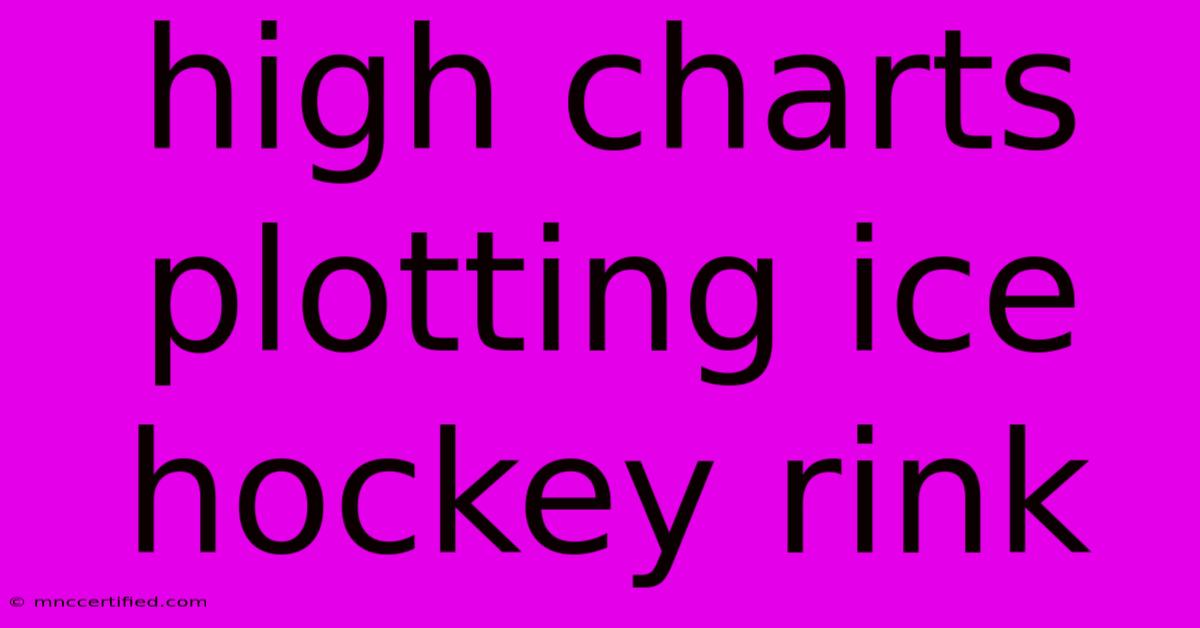High Charts Plotting Ice Hockey Rink

Table of Contents
Highcharts: Visualizing the Ice Hockey Rink for Data-Driven Insights
Highcharts, a powerful and versatile charting library, offers a fantastic platform for visualizing data in a visually compelling and interactive manner. One intriguing application of Highcharts is its ability to represent the dynamic world of ice hockey, specifically by plotting data on a realistic hockey rink.
This article will guide you through the process of utilizing Highcharts to create compelling visualizations that capture the essence of the ice hockey rink, enriching your data analysis and presentations.
1. Understanding the Rink Dimensions
Before diving into the code, let's establish the standard dimensions of an NHL hockey rink:
- Length: 200 feet (60.96 meters)
- Width: 85 feet (25.91 meters)
- Center Circle Diameter: 15 feet (4.57 meters)
- Faceoff Circles Diameter: 12 feet (3.66 meters)
- Goal Crease Width: 6 feet (1.83 meters)
2. Creating the Rink Background
The foundation of our visualization lies in accurately representing the rink's geometry. Highcharts provides the flexibility to define custom shapes through the plotOptions.series.marker.symbol property.
Highcharts.chart('container', {
chart: {
type: 'scatter',
backgroundColor: '#fff', // Set background color
events: {
load: function () {
var chart = this;
// Draw the rink lines
chart.renderer.path(['M', 0, 0, 'L', 0, 200, 'L', 200, 200, 'L', 200, 0, 'Z'])
.attr({
'stroke-width': 2,
stroke: '#000', // Line color
fill: 'none'
})
.add();
// Draw the center circle
chart.renderer.circle(100, 100, 7.5)
.attr({
'stroke-width': 2,
stroke: '#000',
fill: 'none'
})
.add();
// Draw the faceoff circles
// ... (Code to draw faceoff circles)
}
}
},
// ... rest of the configuration
});
This code snippet demonstrates how to draw the rink's perimeter and the center circle using the chart.renderer object. You can similarly draw faceoff circles, goal creases, and any other rink features you need to represent.
3. Adding Data Points and Visualizations
Now that we have the rink structure, let's focus on visualizing your data.
For instance, you could represent:
- Shot Locations: Plot the coordinates of shots taken during a game, with markers indicating whether they were goals or misses.
- Player Movement: Track the movement of specific players over time, using lines or animated trails.
- Heatmaps: Use color gradients to visualize areas of high shot density or player activity.
To do this, you will use the series property within your Highcharts configuration, defining points with their corresponding coordinates on the rink.
series: [{
type: 'scatter',
name: 'Shot Locations',
data: [
{ x: 50, y: 100, marker: { fillColor: 'red', radius: 5 } }, // Missed shot
{ x: 150, y: 90, marker: { fillColor: 'green', radius: 5 } } // Goal
],
// ... Additional styling and configuration
}]
4. Enhancing Interactivity
Highcharts excels at interactive visualizations. You can implement features such as:
- Zooming and Panning: Allow users to zoom in on specific areas of the rink for detailed analysis.
- Tooltips: Display additional information when hovering over data points, such as player names, shot types, or time elapsed.
- Legend: Provide a clear legend to distinguish different data series.
5. Beyond the Rink
While visualizing data on the rink is engaging, you can expand your applications by:
- Player Statistics: Create charts comparing players' performance metrics, such as goals, assists, shots, and ice time.
- Team Analysis: Compare teams' performance, analyzing goals scored, shots attempted, and penalty minutes.
- Game Progression: Track the flow of a game by visualizing events like goals, penalties, and power plays over time.
Conclusion
Highcharts empowers you to bring data from the world of ice hockey to life. By leveraging its capabilities to construct a realistic hockey rink and visualize data points within that context, you can create impactful visualizations that deepen your understanding of the game and communicate insights effectively.

Thank you for visiting our website wich cover about High Charts Plotting Ice Hockey Rink. We hope the information provided has been useful to you. Feel free to contact us if you have any questions or need further assistance. See you next time and dont miss to bookmark.
Featured Posts
-
Tony Mowbray Back To Football
Nov 11, 2024
-
Clement Selects Team To Face Hearts
Nov 11, 2024
-
Saints Beat Falcons 20 17 In 2024 Game
Nov 11, 2024
-
Bennington Public Schools Bond Issue
Nov 11, 2024
-
Robbie Williams Announces Uk And Ireland Tour Stops
Nov 11, 2024